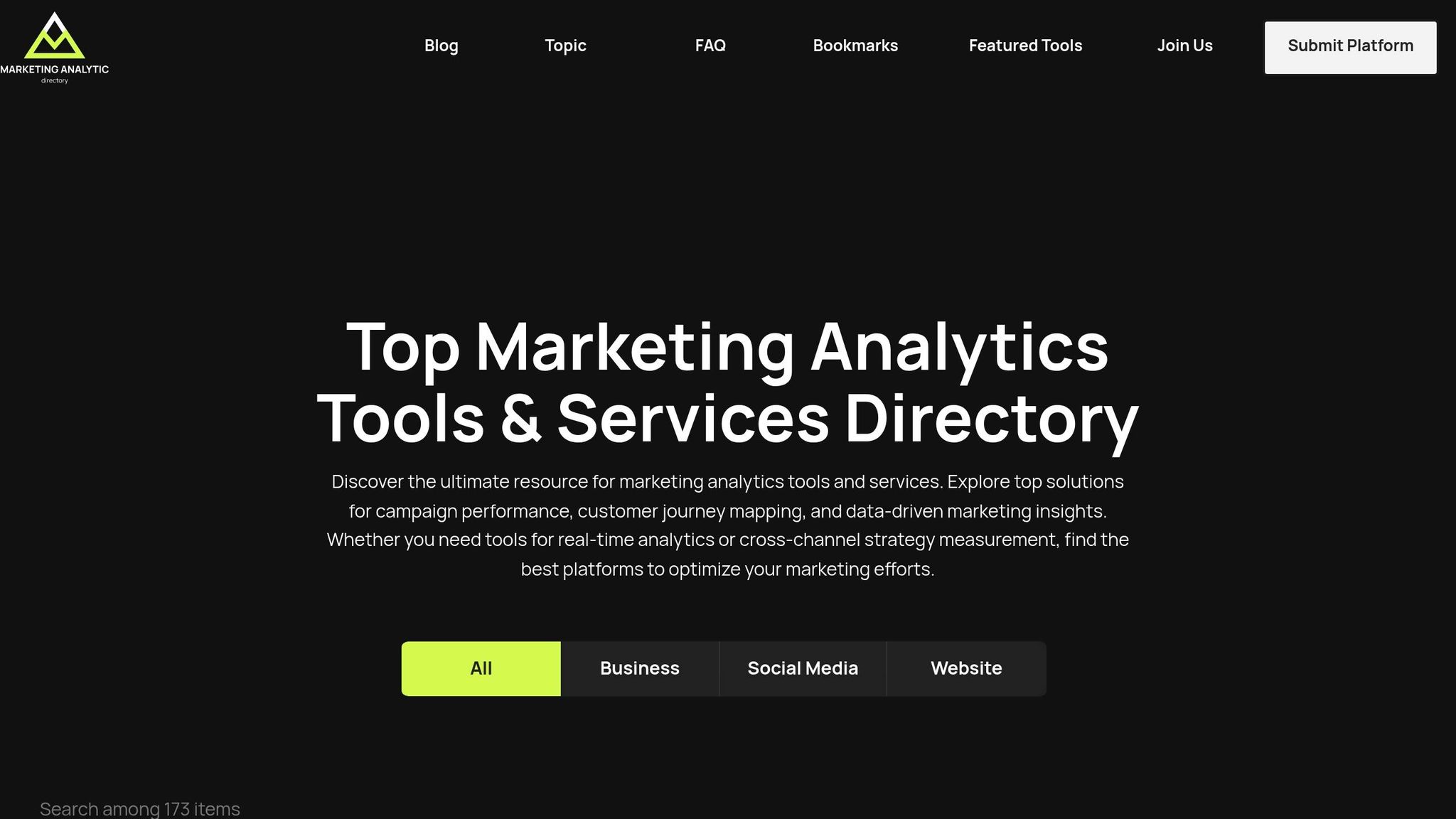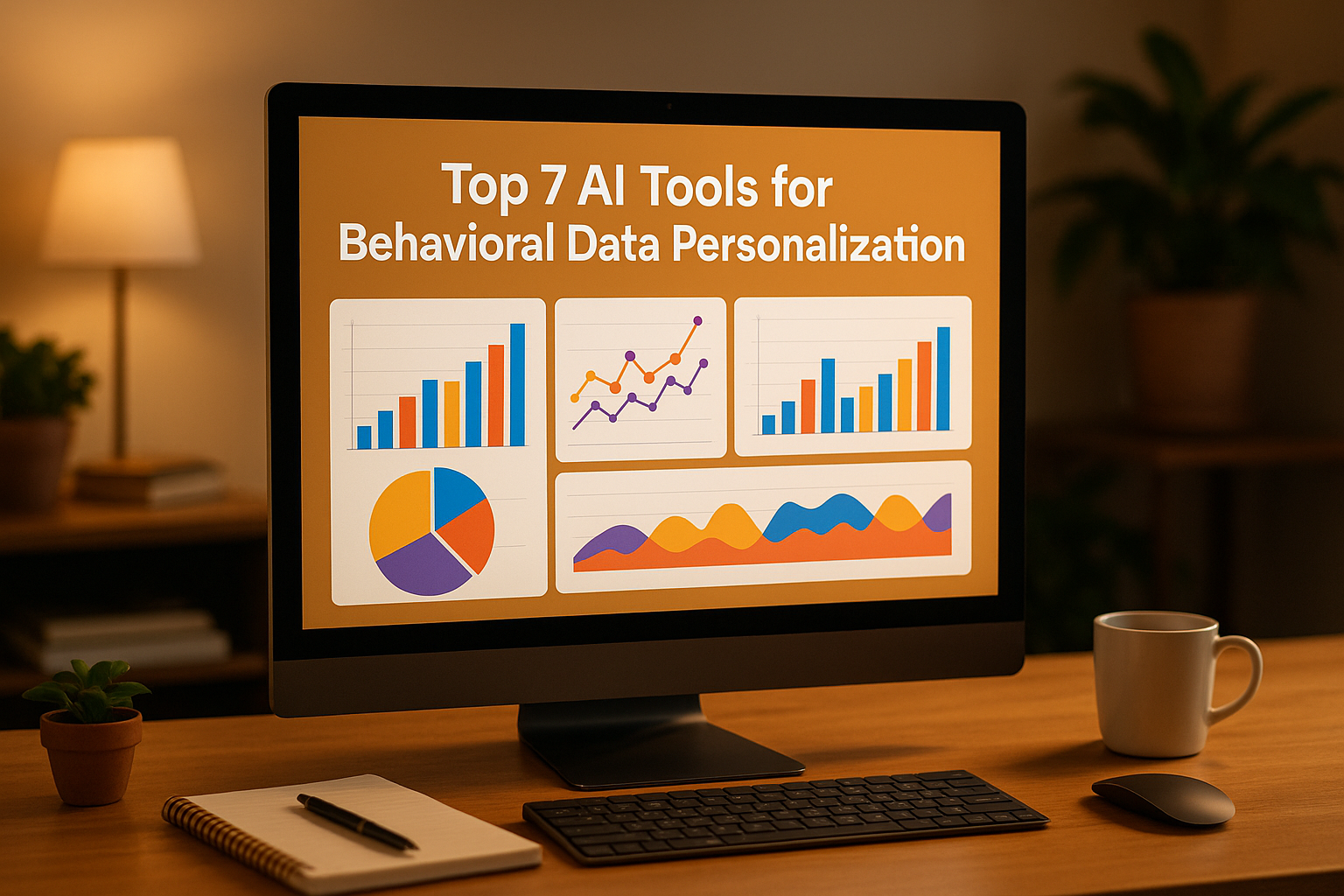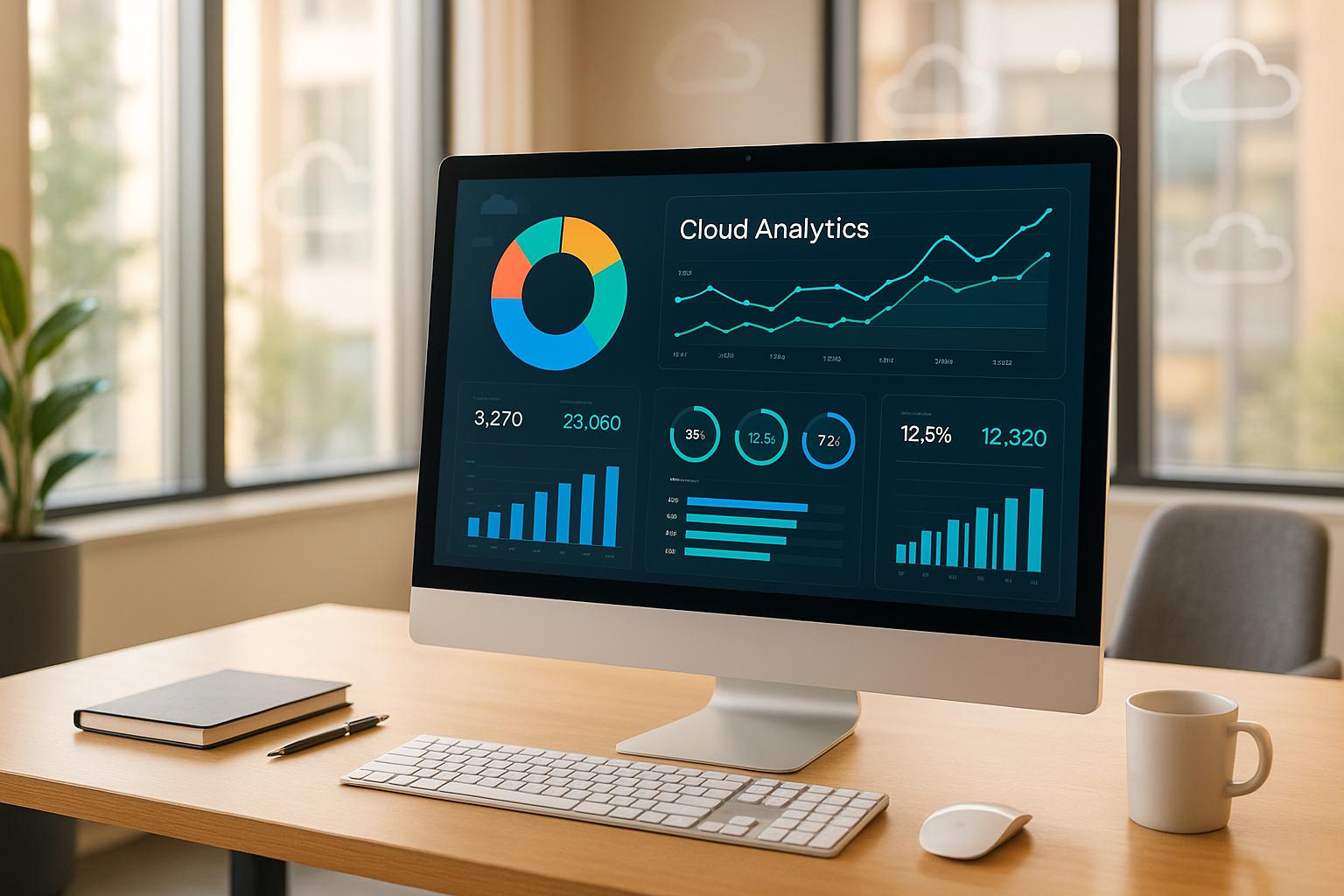Customer segmentation by CLV (Customer Lifetime Value) is a game-changer for businesses looking to optimize marketing efforts. Instead of relying only on demographics or past purchases, predictive models let you group customers based on their future value to your business. Here’s a quick summary of how it works:
- What is CLV? It’s the total revenue a customer is expected to generate during their relationship with your business.
- Why use predictive models? They analyze patterns in customer behavior (like purchase frequency or engagement) to forecast CLV more accurately than manual methods.
- How does segmentation help? It allows you to focus resources on high-value customers, retain at-risk ones, and re-engage low-value groups cost-effectively.
Key Steps to Segment Customers by CLV:
- Collect and prepare data: Use transaction history, behavior data (e.g., website visits), and demographics.
- Engineer features: Create metrics like recency, frequency, and average order value.
- Train predictive models: Start with simple models like regression or RFM analysis, then scale to machine learning (e.g., Random Forests, neural networks) for deeper insights.
- Create CLV-based segments: Divide customers into high, medium, and low CLV groups for targeted marketing strategies.
Why It Matters:
- High-CLV customers can be rewarded with loyalty programs and personalized offers.
- Medium- and low-CLV groups benefit from promotions or re-engagement campaigns.
- Predictive analytics tools simplify the process, offering features like real-time updates and machine learning.
By following these steps, you can make smarter marketing decisions, maximize ROI, and build stronger customer relationships.
Full Python Tutorial: Customer Lifetime Value & RFM Analysis using Machine Learning
Predictive Models for CLV Calculation
Predictive models use data-driven methods to estimate Customer Lifetime Value (CLV). Understanding these approaches helps you choose the right method for your business.
Basic CLV Prediction Models
RFM analysis is a common starting point for CLV prediction. It segments customers based on three key metrics: recency (how recently a purchase was made), frequency (how often purchases occur), and monetary value (the amount spent). With minimal data requirements, RFM is quick to implement and provides immediate insights.
Cohort analysis groups customers based on shared characteristics, such as the date of their first interaction with your business. It’s particularly useful for identifying trends over time and understanding group behaviors. However, it’s less effective for predicting the value of individual customers.
Regression models, like linear regression, strike a balance between simplicity and deeper data insights. These models can handle more complex datasets while remaining easy to interpret. For instance, regression might show that customers who make frequent repeat purchases tend to have higher lifetime value.
While these basic models lay the groundwork, advanced techniques can take CLV predictions to the next level.
Machine Learning Models for CLV
Machine learning methods, including decision trees, random forests, and neural networks, offer more advanced ways to predict CLV.
- Decision trees identify distinct patterns in customer behavior.
- Random forests combine multiple decision trees to reduce overfitting and improve accuracy, making them ideal for businesses with diverse customer bases.
- Neural networks process large datasets to uncover hidden relationships. By analyzing data from sources like transaction histories, website activity, and demographic details, they deliver highly precise predictions.
One major advantage of machine learning models is their ability to adapt. Unlike basic models, which rely on fixed relationships, machine learning continuously updates its predictions as new data is introduced. However, these methods often require larger datasets, significant computational power, and specialized expertise. Their "black box" nature can also make it difficult to understand the specific factors influencing predictions.
Choosing the Right Model
The 80/20 rule often applies to CLV - where a small percentage of customers account for most of the revenue. Both basic and machine learning models can identify these high-value segments, enabling focused and efficient marketing efforts.
When deciding on a predictive model, consider your business’s data maturity and complexity. Simpler models like RFM or regression provide quick insights and are easy to implement. As your data capabilities grow, transitioning to machine learning models can provide more precise predictions and support sophisticated customer segmentation strategies. These insights allow you to allocate resources effectively and maximize customer value.
How to Segment Customers by CLV: Step-by-Step Process
Now that you're familiar with the predictive models available, it’s time to put them to work. Here’s a step-by-step guide to turning model insights into actionable customer segments.
Step 1: Collect and Prepare Customer Data
Start by gathering three essential types of data: transaction, behavior, and demographic data. Transaction history forms the backbone of CLV predictions, including details like purchase dates, amounts spent, and product categories. Behavior data captures customer interactions beyond purchases - think website visits, email opens, customer support inquiries, and social media activity. Demographic data, such as age, location, and gender, adds valuable context to their buying patterns.
Before diving into analysis, clean your data. Remove duplicates, fix errors, and fill in missing values where possible. Keep formatting consistent - dates should follow the MM/DD/YYYY format, and currency values should look like $1,234.56 for U.S. standards. Organize everything into a structured dataset where each row represents a single customer, with columns for all relevant features. This setup makes it easier to feed the data into your predictive model and ensures uniformity across your analysis.
Step 2: Create Features from Raw Data
Raw data alone won’t cut it - enhance it using the RFM framework (recency, frequency, monetary value). Go further by calculating metrics like average order value, time between purchases, and engagement gaps. For more advanced insights, consider metrics like churn probability or the coefficient of variation. You can also create binary indicators for specific behaviors, such as whether a customer used a discount code or contacted customer support. These refined features help pinpoint what makes each customer group tick.
Step 3: Choose and Train Your Predictive Model
Pick a predictive model that suits your business needs and data size. If you’re working with smaller datasets or just starting out, regression analysis or RFM scoring might be a good fit. For larger datasets or more complex customer behaviors, machine learning techniques like Random Forests or clustering methods (e.g., K-Means) can provide deeper insights.
Once your dataset is ready, split it into training (80%) and testing (20%) subsets. Train your model using the engineered features, adjusting parameters like tree depth or cluster count to improve accuracy. Test the model on the validation set to ensure it performs well across different customer groups and avoids overfitting. A reliable model should identify clear patterns and adapt to new customer behaviors over time.
Step 4: Create Customer Segments Based on CLV
Divide your customers into groups based on their CLV, such as high-CLV (top 20–30%), moderate-CLV (middle 40–50%), and low-CLV (bottom 20–30%). Tailor these tiers to fit your business needs, and document the defining traits of each group for targeted outreach.
For example, one e-commerce company in 2023 used clustering techniques with dimensionality reduction to uncover distinct customer groups. High-CLV customers, who bought frequently and spent more per order, were rewarded with loyalty programs. Moderate-CLV customers responded well to personalized promotions, while low-CLV customers were targeted with re-engagement campaigns like win-back emails.
Keep an eye on these segments over time. Regularly update your model to reflect changes in customer behavior, ensuring your segmentation stays relevant and effective.
sbb-itb-5174ba0
Marketing Strategies for CLV Segments
Once you've segmented your customers by CLV (Customer Lifetime Value), the next step is to tailor your marketing strategies to match each group's potential. The idea is simple: high-CLV customers deserve premium attention, while low-CLV customers can be nurtured with cost-effective strategies aimed at boosting their engagement and spending.
Marketing to High-CLV Customers
High-value customers are worth the extra investment because their long-term value justifies higher retention costs. The focus here is on creating deeper, more meaningful connections through personalized services and exclusive experiences.
One effective approach is implementing VIP loyalty programs. For example, you could establish a "Platinum Member" tier for your top 5% of spenders, offering perks like free expedited shipping, early access to new products, or special birthday rewards. These exclusive benefits not only make customers feel valued but also encourage repeat purchases. Personalized product recommendations and premium customer service - such as dedicated support lines or concierge services - can further enhance satisfaction, even when issues arise.
When done right, these premium programs can build loyalty and drive consistent purchases from your top-tier customers.
Growing Low-CLV Customer Value
Low-CLV customers represent untapped potential. The goal here is to encourage them to spend more frequently and increase their average order value, gradually moving them into higher-value segments. This requires targeted strategies like cross-selling, upselling, and re-engagement campaigns.
Win-back initiatives are a great start. For instance, offering limited-time discounts (e.g., 10% off or free shipping for orders above a certain amount) can reignite interest. Automated email flows triggered by specific behaviors - like browsing without buying or abandoning a cart - are another cost-efficient way to boost engagement without constant manual effort.
For cross-selling and upselling, focus on offering practical and appealing upgrades. If a customer regularly purchases entry-level products, suggest mid-tier options that provide better features or longer-lasting benefits. This approach feels natural and customer-focused, increasing the likelihood of success.
Budget Allocation Across Customer Segments
A smart budget strategy ensures you're putting resources where they’ll have the most impact. High-CLV segments should receive a larger share of the budget, while lower-value groups can be nurtured with more affordable tactics. For instance, automated email campaigns, social media retargeting, and general promotions are ideal for lower-tier customers. However, avoid costly methods like personalized direct mail unless a customer shows signs of transitioning to a higher tier.
Regularly review and adjust your budget based on customer behavior. Predictive analytics can help track how customers move between segments, allowing you to reallocate funds to growth-focused campaigns when necessary.
Finally, monitor key metrics - such as CLV growth, retention rates, average order value, purchase frequency, and churn risk - to measure the success of your strategies and refine them as needed.
Tools for CLV Segmentation and Predictive Analytics
CLV segmentation tools turn complex data science into actionable insights. The key is finding tools that align with your business size and goals, enabling you to predict customer value effectively and act quickly. Start by exploring options through specialized directories to identify the best fit for your needs.
Finding Tools with Marketing Analytics Tools Directory

The Marketing Analytics Tools Directory is a great resource for comparing predictive analytics platforms. It allows you to evaluate tools based on features like data integration, machine learning capabilities, and campaign tracking. The directory organizes tools into categories and offers filters to match your specific requirements.
For example, a mid-sized e-commerce retailer might prioritize tools with pre-built CLV models and seamless Shopify integration. On the other hand, a larger enterprise may need platforms that support advanced machine learning customizations and big data processing. The directory’s comparison feature makes it easy to review pricing, user feedback, and technical specs - all in one place, saving you the hassle of jumping between vendor sites.
The directory also caters to varying levels of technical expertise. Whether you're looking for a no-code platform or a solution for custom model development, it helps you find tools suited to your skill level.
Once you've shortlisted potential tools, it’s time to focus on the features that truly matter for performance.
Must-Have Features in Predictive Analytics Tools
Data integration is a critical feature. Your platform should handle data from transaction histories, CRM systems, web analytics, and email marketing tools. For instance, Klaviyo integrates directly with e-commerce platforms to automatically segment customers based on predicted CLV.
Machine learning algorithm support is another essential. From basic regression models to advanced techniques like Random Forests, these algorithms adapt to shifts in customer behavior, often delivering more precise predictions than traditional methods.
Scalable data processing ensures the tool can grow with your business. Cloud-based platforms are particularly effective at managing increasing data volumes, maintaining performance as your customer base expands from thousands to millions of records.
Real-time updates and visualization dashboards are invaluable for monitoring CLV segments continuously. Many tools feature user-friendly interfaces that show how customers move between segments over time. They also provide performance metrics for each group and allow you to export data in formats like CSV for deeper analysis.
API access and documentation are crucial for integrating CLV data with other marketing tools. This flexibility lets you customize workflows to fit your specific processes.
To ensure a smooth implementation, consider starting with a pilot project. Testing a tool with a small dataset helps you evaluate its ability to manage your data quality and integration needs before rolling it out across your entire customer base. This approach minimizes risks and highlights any potential challenges early on.
Conclusion
Using predictive models for CLV segmentation can revolutionize how businesses manage customer relationships and allocate marketing budgets. Instead of applying a one-size-fits-all approach, you can pinpoint high-value customers for retention efforts and identify low-value segments for cost-effective strategies.
The steps outlined here provide a practical guide to get started. If you're new to predictive modeling, begin with simpler models and gradually move to advanced machine learning techniques as your team gains experience and your data quality improves. Remember, well-organized and complete data often yields better results than relying on sophisticated models with gaps in your dataset.
To keep your segmentation strategy effective, make it a habit to retrain your models with fresh data and track performance metrics regularly. Customer preferences evolve, market dynamics shift, and new information becomes available - all of which can impact your results. By adapting your tools and strategies in response to these changes, you’ll stay ahead of the curve.
Selecting the right platform is crucial for implementing these strategies effectively. The Marketing Analytics Tools Directory is a great starting point to explore options. Whether you’re looking for pre-built models for quick deployment or advanced machine learning tools for custom solutions, the directory helps you compare features based on your needs and budget, ensuring you choose a platform that aligns with your goals.
The key to success lies in turning insights into action. Use data from high-value segments to shape retention strategies, target mid-level customers with upsell opportunities, and re-engage low-value segments with win-back campaigns. This approach not only improves ROI but also strengthens customer relationships, leading to sustainable growth.
Start small by piloting your strategy, validate its effectiveness, and then expand it across your customer base. Investing in predictive CLV segmentation can lead to smarter marketing spend, deeper customer insights, and long-term business success.
FAQs
How can businesses move from basic CLV models to more advanced machine learning techniques?
To move from basic Customer Lifetime Value (CLV) models to more advanced machine learning approaches, businesses need to start with a solid foundation: high-quality customer data. This includes key details like purchase history, engagement metrics, and demographic information. The data should be clean, well-organized, and ready for analysis - because messy data leads to unreliable results.
Once the data is in good shape, businesses can experiment with machine learning algorithms such as regression models, decision trees, or neural networks. These techniques excel at identifying complex relationships and patterns within the data, making CLV predictions much more precise. A good starting point is training these models on historical data, then validating and fine-tuning them using performance metrics like accuracy or mean squared error.
For those just stepping into the world of machine learning, marketing analytics tools can be a game-changer. Many of these platforms come with built-in machine learning features, making it easier to adopt advanced methods without needing a team of data scientists. By using such tools, businesses can gain deeper insights into their customers and sharpen their segmentation strategies.
What challenges do businesses face when gathering and preparing data for CLV segmentation?
When it comes to Customer Lifetime Value (CLV) segmentation, businesses often face a host of challenges during the data collection and preparation process. One major hurdle is incomplete or inconsistent data. Customer details might be scattered across multiple systems, or some records may be missing crucial information needed for effective modeling.
Maintaining data quality is another significant issue. Problems like duplicate entries, outdated records, and formatting errors can seriously undermine the accuracy of CLV predictions. On top of that, combining data from various sources - like CRM platforms, transaction databases, and marketing tools - can be both complicated and time-intensive.
To address these challenges, businesses should prioritize strong data governance practices. Using tools designed to streamline data collection and cleaning can make a big difference. Additionally, investing in advanced marketing analytics platforms can simplify the integration process and lead to more precise segmentation outcomes.
How can companies allocate budgets effectively across customer segments based on CLV to maximize ROI?
To make the most of your budget using Customer Lifetime Value (CLV), start by understanding the distinct needs and behaviors of each customer segment. Predictive models can help estimate the future value each group contributes to your business, enabling you to focus on the segments that bring the highest returns while still addressing lower-value groups in a thoughtful way.
Allocate resources where they’ll have the most impact. For instance, put more effort into personalized marketing for high-CLV customers, while opting for cost-efficient retention strategies for those in the mid-CLV range. Continuously review performance data to fine-tune your approach and ensure you're getting the best possible return on your investment.


